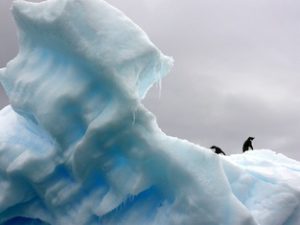
Mass or count?
In this stunning photograph, we use two nouns to describe what we can see: we see two penguins on ice. And these two nouns demonstrate the final way nouns can be divided: into count nouns and mass nouns. Count nouns are also sometimes called unit nouns (in that unhelpful way in English grammar where the same thing often has two very different names) but I prefer count nouns, as it is a better reminder of what count nouns are.
Very simply, count nouns are nouns that we can count: we count two penguins in the photo, and, because we can count the number of penguins, this makes penguins a count noun. (It really is that simple.)
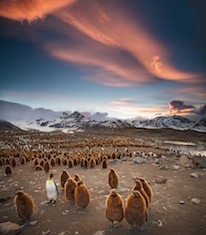
It doesn’t matter if the number to be counted is very large; if it is theoretically possible to count the number of the noun you are contemplating, it is a count noun.
It doesn’t matter if the number to be counted is very large; if the number is theoretically possible to be counted, your noun is still a count noun. There seem to be an uncountable number of penguin chicks in the second photograph, but if you sent out enough Antarctic scientists for long enough, they would be able to count all the penguin chicks. Penguins remains a count noun; chicks is also a count noun.
Mass nouns are nouns that we cannot count; things we do not divide up but exist as one mass or heap or lump or group. Ice is a mass noun. It does not matter whether we have a tiny amount of ice, as in a snowflake crystal, or a vast expanse of frozen ice shelf: we use the same word, ice, for our noun.
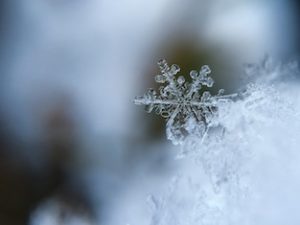

A mass noun can be a tiny quantity or a vast one
The test for mass and count nouns is simply to try counting the noun. If you can say or write ‘one penguin, two penguins, three penguins’, you have a count noun. If you say or write ‘one ice, two ices, three ices’, you quickly realise that makes no sense, unless you change to a different noun (ice cubes, ice blocks, icebergs).
The test shows the main feature of mass nouns: unlike most other nouns, a mass noun cannot be made plural. In this way, mass nouns are like proper nouns, although, while proper nouns can occasionally exist in plural forms, mass nouns never do. Sunshine, dirt, traffic, dust, petrol, oregano, vanilla: all of these are mass nouns, and cannot be made plural.
So far, so straightforward. The tricky part is that there are some words that can be used as both count nouns and mass nouns. At this time of year, many of us think about chocolate, a perfect demonstration of this phenomenon. When we refer to individual sweet treats made with this luscious substance, we call them chocolates. Chocolate is therefore a count noun, as we can very easily count the number of chocolates we have eaten. But we also think about chocolate as a mass. For example, in the sentence
- I have eaten too much chocolate today
I am not thinking about the total individual number of chocolates I have eaten, but the total – mass – amount of chocolate I have eaten.
- I have eaten too many chocolates today
means something a little bit different; here I have kept count of the number of individual chocolate treats and had too many.
Liquids often fall into this sometimes-count-nouns-sometimes-mass-nouns category. You can add too much melted chocolate (mass) to a drink, for example; you would not add too many chocolates to it.

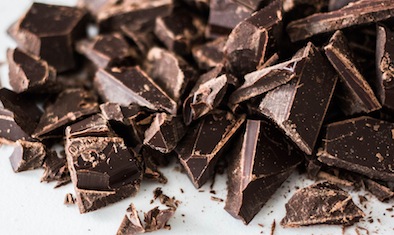
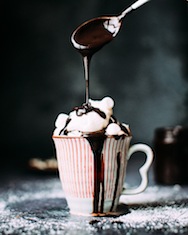
Chocolate can be either a count noun (chocolates) or a mass noun (chocolate), depending on the context in which we use it
Why do we are at all about mass nouns and count nouns? Because we use different words before them. With mass nouns, we use less and much; with count nouns, we use fewer and many.
- I had too much chocolate; I should have had had less chocolate.
- I had too many chocolates; I should have had fewer chocolates.
These days, some authoritative references (such as the Australian Style Manual) say that preserving a distinction between less and fewer is pointless and the two terms can be used interchangeably. While I recognise this is probably the case, it saddens me. It is worth remembering that for a number of people, the sentence I had less chocolates than he did sounds just as wrong as saying He had too much chocolates.
I personally blame supermarket signwriters who for decades made the sign Twelve items or less seem perfectably acceptable, and many football commentators (who perhaps paid more attention in school to sport than to the finer points of grammar) who repeatedly talk about less players, less tackles, less goals . . . and seem completely unaware of the existence of the word fewer.
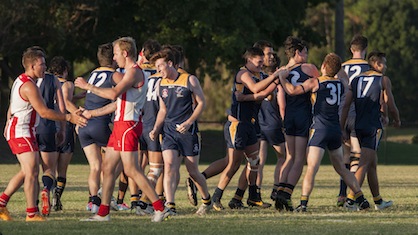
Are football commentators partly to blame for people caring less about the distinction between mass nouns and count nouns?
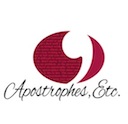
If you have found this post interesting, you can find a full index to my other posts on the index page. To be notified when I post a new topic, follow me on Facebook! If you have any particular questions you’d like me to answer in future posts, just send me a message. I’m always interested to learn what people think, and how you came across this site, so please post a comment.
If you think you would be interested in either my complete grammar course or an individual customised online course (particularly suited for people who don’t live in Melbourne), just click your preferred option.
4 comments on “Nouns: mass and count, and the less–fewer issue”